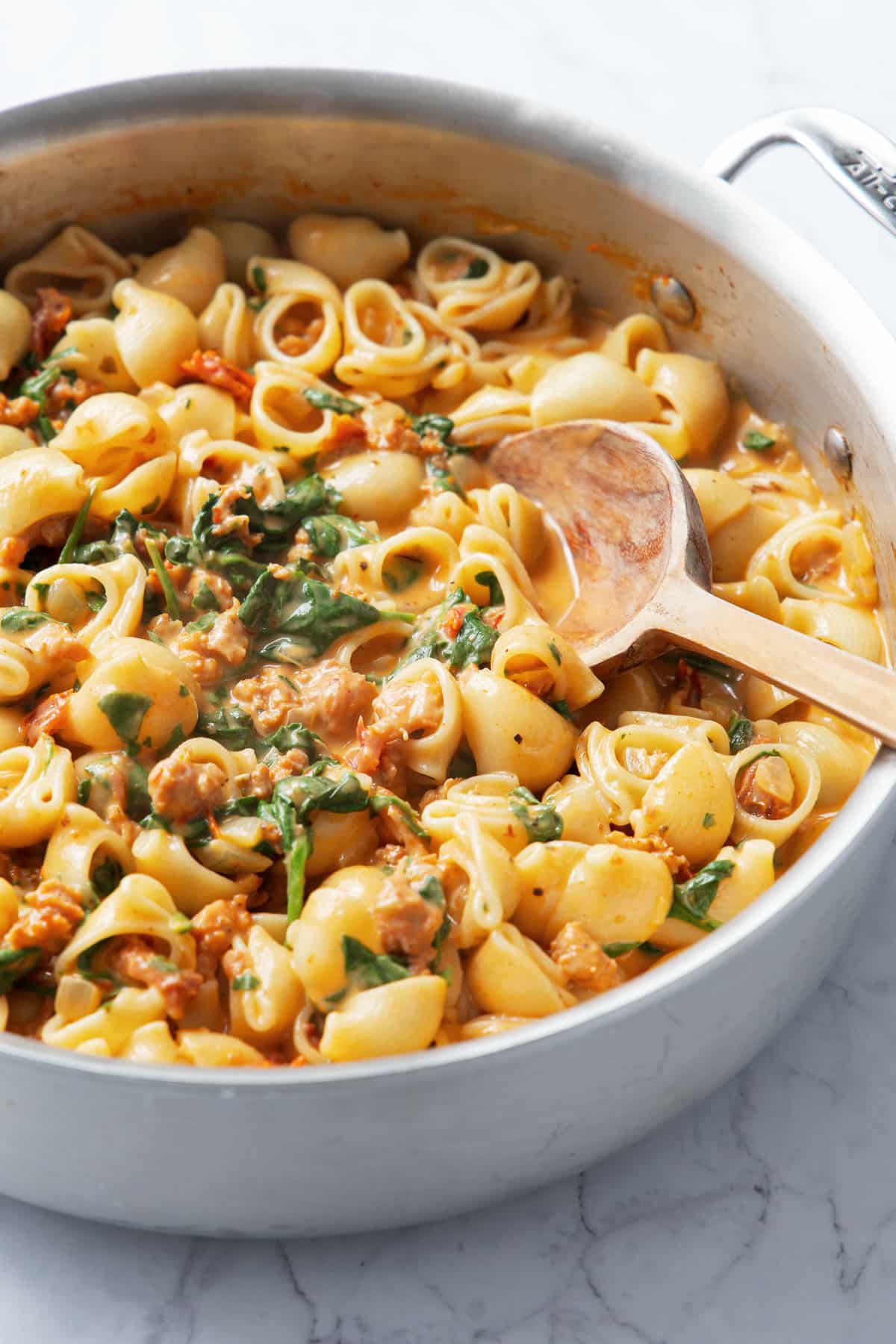A focus on at-home cooking, restaurant takeout, and delivery reshape the food industry for the near term.
The coronavirus pandemic has had widespread impact on every facet of food production, distribution, retailing, and foodservice. It has upended some trends, such as the long, steady decline in grocery center-store sales, and accelerated others, such as online grocery ordering and off-premises restaurant dining.
How 2021 will unfold will be a function of the vaccine rollouts and the confidence consumers have in their own safety. Some consumer shopping behaviors that accelerated during the pandemic, such as grocery delivery or curbside pickup, may persist at elevated levels. Likewise, consumer preferences with regard to restaurants, such as takeout, delivery, and outdoor dining, are likely to continue in the year ahead.
A significant number of consumers may also continue to prefer cooking at home, rather than dining out. This will help perpetuate the strong sales performance of food retailers into 2021, at least until consumers feel safe dining in restaurants and restrictions on restaurant operations have ended, according to industry observers.

In the meantime, consumers have continued to seek to replace some of their restaurant dining by buying more premium and specialty products to prepare meals at home. Sales of premium and super-premium packaged goods grew by 1.7 percent during the latter part of 2020, says Colin Stewart, executive vice president, business intelligence, at Jacksonville, Florida-based Acosta, citing IRI research.
He notes that the trend has been “consistent across households of all income levels.”
“This has been particularly noticeable with alcohol, coffee, cheese, chocolate—even hair care,” Stewart says. “Since we are a long way from ‘back to normal,’ we would expect these trends to continue well into 2021.”
Stewart says the changes in consumer shopping behaviors, and the adjustments made by retailers to accommodate them, will likely persist for some time. “At this point, it appears that 2021 will be an extension of many of the changes we experienced in 2020, with the health and safety of shoppers as the top priority for retailers,” he says. “Social distancing, touch-free, and transparency will continue to drive the way we live our lives, and the way we shop.”
He expects that many consumers will continue to minimize their shopping trips inside stores or will not visit stores at all. “The acceleration of online grocery shopping will endure, with expectations of doubling market share by 2025,” says Stewart. “Retailers will work hard to ensure seamless integration between in-store and online shopping, leveraging smartphones to drive personalization, and dark stores to drive fulfillment efficiencies.”
Grocery shoppers will expect inspiration and excitement when they do venture inside brick-and-mortar stores, he says. “Shopping wasn’t fun in 2020, and shoppers will need unique offerings to draw them back into the store in 2021. They will particularly be looking for meal solutions, healthy and convenient food options, self-care solutions, and one-stop shopping.”
After a year of product shortages and out-of-stocks on retailer shelves, product availability will be increasingly important going forward, he says. In addition, shoppers will expect better pricing and more deals after a year in which promotional activity was scarce and prices increased on many items.
Shelley Balanko, senior vice president at The Hartman Group, Bellevue, Washington, agrees that consumers will likely seek to minimize trips to the store and spend less time browsing the aisles. That will lead to a need for easy-to-shop store layouts, she says.
Balanko also points out that along with their increasing use of e-commerce, consumers have become more comfortable buying perishables online. Stores that incorporate some personalization into the online shopping experience—such as direct communication, feedback, and the building in of preferences—are more likely to provide more satisfying experiences for their customers.
Healthier Eating
Many Americans reported that they tried to eat healthier during the pandemic, and that they aspire to maintain a healthier lifestyle when the pandemic is over, says Balanko.
“Eating with physical, mental, and emotional resilience in mind is increasing,” she says.
Stewart of Acosta agrees that consumers will focus on eating healthier in 2021, and will look to self-care options, such as seeking out foods that boost their immune systems. He cites data from research firm SPINS showing high growth rates of natural foods during the pandemic, which he says reflects consumers’ increased interest in health. Sales of vitamins and supplements have also increased.
The plant-based food trend will also gain momentum in 2021, Stewart says, noting that 70 percent of shoppers who buy plant-based alternatives do so for health reasons. “This is one of the top categories that shoppers say they will buy even more of post-COVID,” he says.
Balanko notes that although consumers had been cooking more dinners at home early in the pandemic, that trend has slowed amid the emergence of “cooking fatigue,” indicating potential demand for more quick-and-easy meal solutions in the months ahead. She also expects consumers’ focus on snacking to persist.

“As consumers adapt to the new realities of life during COVID-19, perceptions of busyness have increased, which reinforces consumers’ tendencies to cook less and snack more,” Balanko says.
Focus on Functional
Balanko notes that specialty food makers can capitalize on consumers’ ongoing interest in health and wellness by emphasizing those attributes in their products. “Consumers are receptive to functional benefits, especially from inherently functional whole food ingredients,” she says.
That doesn’t mean consumers will avoid indulgent foods, however, she adds. “Authentic indulgences play a role in wellness. Consumers enjoy indulgences and comfort foods that have been upgraded with high-quality ethically and sustainably sourced/produced ingredients.”
The pandemic accelerated the trend toward what she describes as “conscious consumption,” indicating an opportunity for specialty food makers to showcase their sustainability. “Pay attention to the role packaging plays in reinforcing sustainability credibility while also keeping the product, and consumer, safe,” says Balanko.
from Food Trends https://ift.tt/3hQJakB





0 comments:
Post a Comment